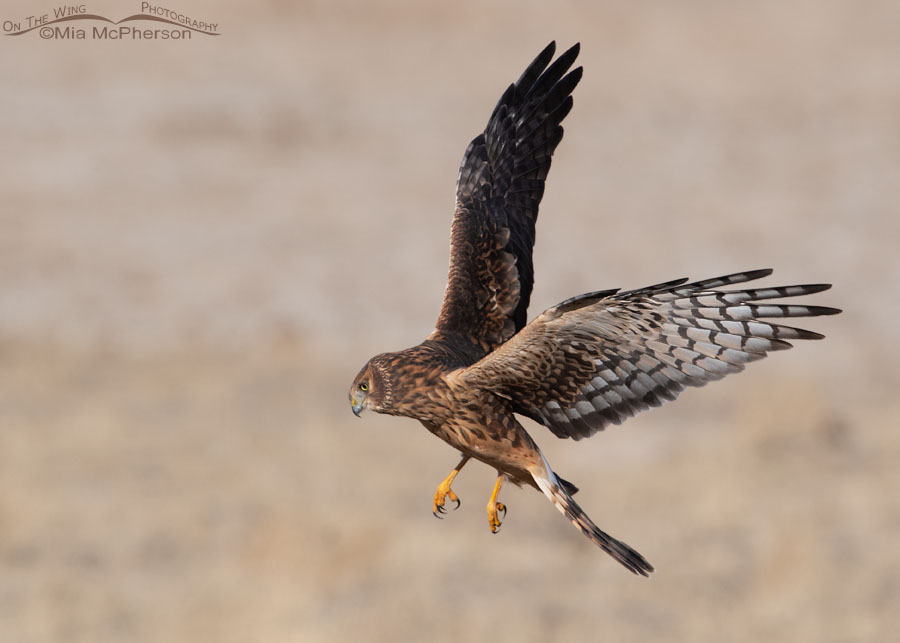 Northern Harrier hovering while on the hunt – Nikon D500, f7.1, 1/2500, ISO 320, Nikkor 500mm VR with 1.4x TC, natural light, not baited
Northern Harrier hovering while on the hunt – Nikon D500, f7.1, 1/2500, ISO 320, Nikkor 500mm VR with 1.4x TC, natural light, not baited
It was terrific to see a few Northern Harriers up and flying yesterday morning over the marshes at Farmington Bay WMA. I don’t see nearly as many harriers over the marshes at Farmington Bay as I used to five to ten years ago but the marshes have changed some since I moved to northern Utah. There are now fewer phrags, an invasive grass, than there used to be because of intensive phragmites mitigation at the WMA.
Fewer phrags may mean fewer prey animals are in the areas that I can get to when I am photographing birds at Farmington Bay. When it comes to Northern Harriers hunting for prey I’ve read that this species tend to under use heavily grazed fields and since cattle are being used to help mitigate the phrags that may be why we are seeing fewer harriers close to the roads at the WMA than we used to.
I’ve wondered about the impact the cattle trampling the ground in the marshes have on nesting success for ground nesting birds such as Northern Harriers, Short-eared Owls and other species that nest on the ground. I’ve done a bit of research and found this on Birds of North America (BNA):
“In agricultural areas, nests are destroyed by livestock (trampling), haying, and other agricultural practice.”
Cattle have also been used to combat invasive phragmites at Bear River Migratory Bird Refuge and sadly I see fewer harriers there now than I used to as well.
I want to clarify that I am not saying that phragmites mitigation is a “bad” thing, I’m just explaining why we may be seeing fewer Northern Harriers now than we used to. Phrags are invasive and they do need to be controlled.
Additionally climate change may already be impacting these raptors and their prey. Loss of prey species=fewer predatory birds.
Two years ago today I photographed this Northern Harrier as it hovered over the marsh while hunting for prey. Northern Harriers use their eyes and their ears to locate prey, this harrier may have titled its head in order to hear the prey it was attempting to locate better.
I missed out on a few shots of the Northern Harriers I saw yesterday and that disappointed me, they might have been my first decent images of this species this fall but I didn’t start firing the shutter until the engine was off and by that time the harrier had turned its head away from me.
Bird photography can be frustrating but I still love what I do despite the problems that can and quite often do get in the way.
Life is good.
Mia
Click here to see more of my Northern Harrier photos plus facts and information about this species.


On the hunt! Terrific capture of a predator marking his prey. Thanks Mia.
Many changes in the bay area, all in my view not good for wildlife. I guess it is a sign I am old when I see “progress” as destruction of wild areas.
Sigh.
I really, really wish that so many of the changes to habitat weren’t created/aggravated by us.
Interesting observations/thoughts on marsh hawks and phragmites. Thank you! Phragmites has been a big challenge to NE coastal land managers for a long time and we’ve seen big drops in marsh hawk numbers as coastal farms, fields, grasslands and wetlands are lost to development, to changes in hydrology. I agree with Dick too that maybe some invasives have an important role to play…we need to rethink how to “control” them. Maybe, taking the long view, they’re a step in the land healing process? See Tao Orion’s book, “Beyond the War on Invasives” for an alternative view. Meanwhile, tough to lose harriers, short-eared owls, any.
Beautiful shot! Unfortunately we have trouble with phragmites as well. Too many invasives to mitigate every one! I tend to believe invasives change habitat sometimes for the good as well as for the bad. But, that change also changes a predators food supply, causing predators to move. Condensing space produces fewer individuals a sad situation we are witnessing!
Problems result in better skills
Nice shots.